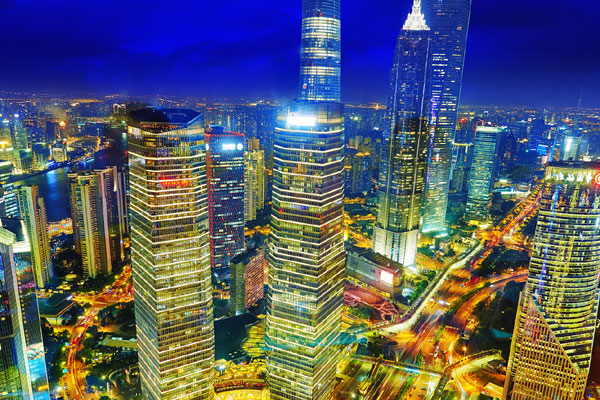
Exporters run for high ground as China growth story unravels
FRANKFURT, August 27, 2015
The alarming scale of China's economic slowdown is pushing European exporters to accelerate a move into premium goods and services, sacrificing volumes if necessary to sustain margins.
As Chinese rivals gain expertise in areas from elevators to healthcare to sweeteners while unexpectedly weak demand exposes yet more unneeded supply, prices are falling even in areas foreign suppliers thought were insulated from local competition.
A Chinese interest rate cut and loosening of bank lending restrictions this week designed to boost lending to Chinese businesses underscored Beijing's determination to stimulate local consumption and production.
The move, on the heels of a surprise yuan devaluation two weeks ago, has further unnerved investors who bought into the growth stories of European exporters dependent on China.
German industrial group ThyssenKrupp, Dutch healthcare and consumer group Philips and British food ingredients group Tate & Lyle are among those adjusting for lower growth and a new intensity in price wars.
"The message which we have given the team in China is the following: You need to move up your margin," ThyssenKrupp chief executive Heinrich Hiesinger told analysts this month, referring to the group's elevator business, its most profitable unit.
"If they have the risk that the growth or the market would force that margin going down, then they would get the message: Be more selective, because we do not want you to dilute."
ThyssenKrupp depends on China for 16 per cent of sales at its elevator unit, which makes both high-end lifts and escalators for commercial buildings and mass-market elevators for residential property, where the market is coming out of a slump.
In the midst of the market turmoil on Wednesday ThyssenKrupp said it was increasing its stake in a joint elevators venture that caters mainly for the Chinese market.
MANAGING THE MIX
As Chinese national champions like telecoms giant Huawei, train maker CRRC and power generation equipment maker Shanghai Electric have grown, foreign rivals have retreated to higher ground or left.
Denmark's Vestas is focusing on producing higher quality wind turbines for the Chinese market after failing in a decade of attempts to make inroads at the lower end, which is flush with cheaper locally made turbines.
The chief executive of German wind turbine maker Senvion told Reuters this week he had no plans to enter China, the world's biggest market by new installations. "As a sales market, you will have to look at other regions," he said.
Solar power, too - a key strategic industry for China - is a closed shop for foreign suppliers, and in coal power generation, which produces most of China's electricity, Chinese suppliers dominate the market.
A rise in Chinese competition has sometimes come from unexpected quarters.
Tate & Lyle is refocusing its sucralose artificial sweetener business on customers that care about quality, safety and provenance more than price after prices were hammered by a glut of cheaper product from China.
Late last year, Tate & Lyle forecast sucralose prices would fall 25 per cent year on year as it had to renegotiate supply contracts at lower prices to protect share from Chinese rivals.
In July, it said it was "managing the mix between volume and margin very, very carefully right now".
Barclays analyst James Stettler said: "Telecoms, rail, power generation and transmission are pretty much all Chinese. The big question is now what happens in healthcare equipment."
TECHNOLOGY TRANSFER
Healthcare is a key area in which China wants to promote its homegrown medical devices and create incentives for medical institutions to use locally made products.
Beijing wants to reduce soaring healthcare costs while improving the health of its 1.4 billion people.
The medical equipment devices market, worth an estimated 212 billion yuan ($33 billion) in 2013, is dominated by foreign players such as Siemens, General Electric, Philips and Toshiba.
"We see the market slowdown. Obviously, we also see there the emergence of local competitors that nibble at the market share... and I think that is what all major companies will have to reckon with," Philips CEO Frans van Houten said last month.
Chinese providers like Mindray Medical International and China Resources Wandong Medical Equipment Co Ltd are mainly making their presence felt in simpler imaging devices such as ultrasound machines so far.
But with technology transfer thaniks to joint ventures that most foreign firms set up to produce in China, foreign suppliers cannot hope to keep indefinitely their ownership of the market for high-end computed tomography or magnetic resonance imaging.
Most foreign firms with significant Chinese operations have such joint ventures: certain industries like auto making require them, while other companies see JVs as a way to local market knowledge, government connections or distribution channels.
Siemens chief executive Joe Kaeser described the dilemma last month, explaining why Siemens continued to partner with Shanghai Electric despite the Chinese company's having become more of a direct competitor.
Shanghai Electric owns a 40 percent stake in Italian power engineering group Ansaldo Energia, which is now seen as favourite to buy assets being shed by Siemens' rival Alstom as part of a bigger Alstom-GE deal.
Kaeser told sceptical analysts: "We continue with a very close partnership with Shanghai Electric because the better technology you offer the more welcome you are as a partner, especially in China." - Reuters







